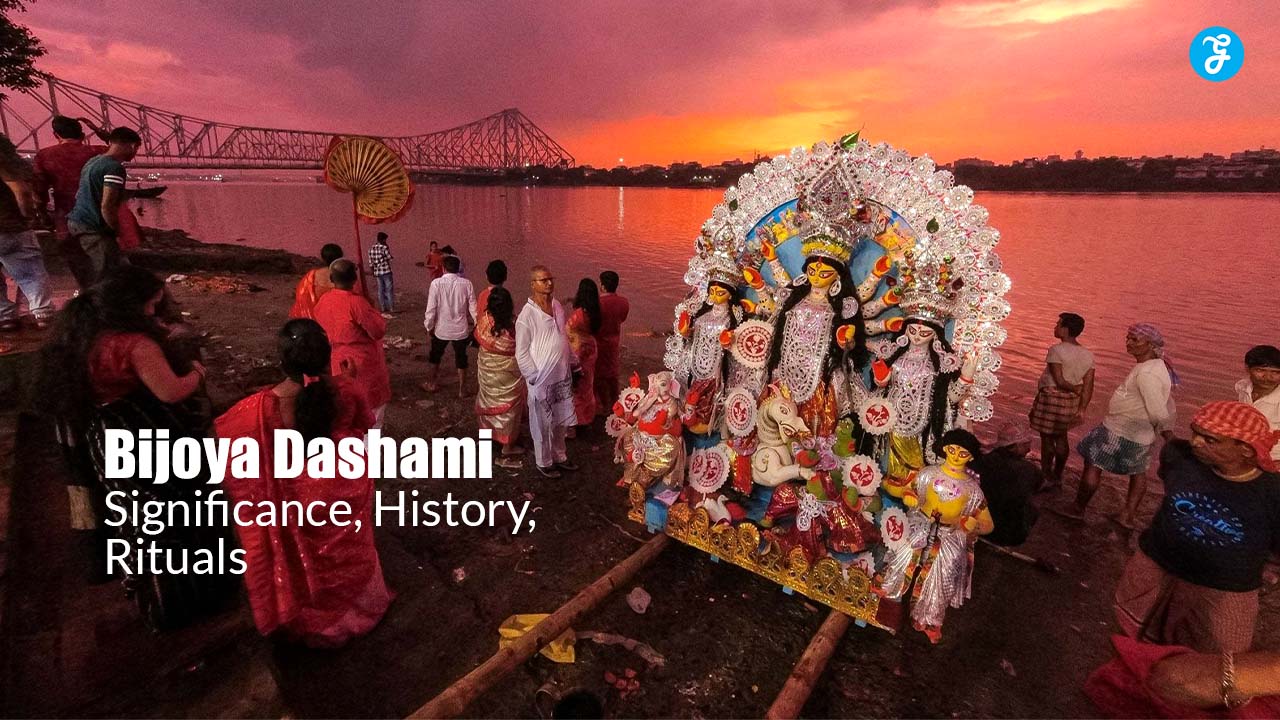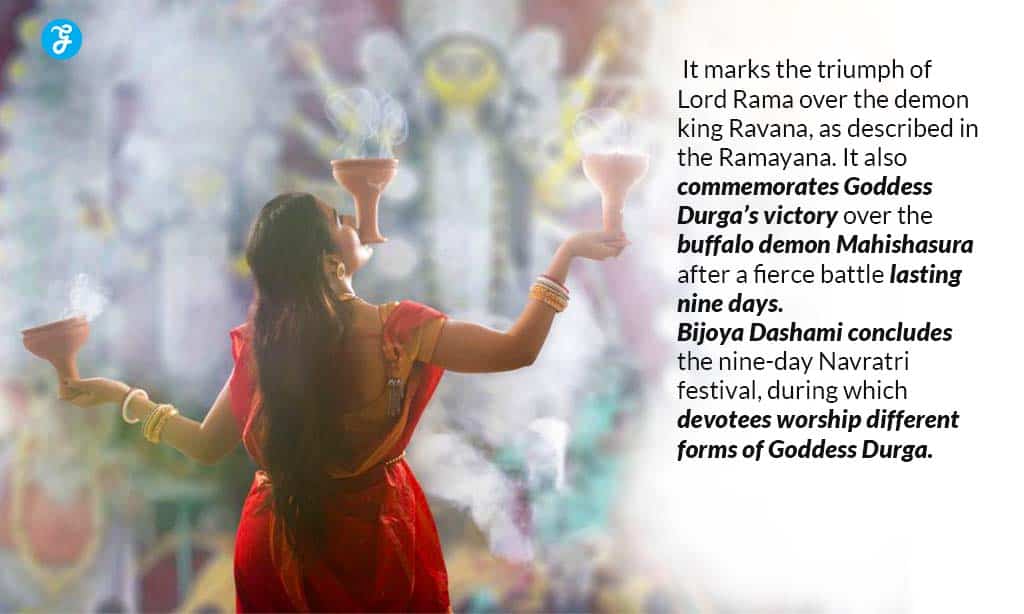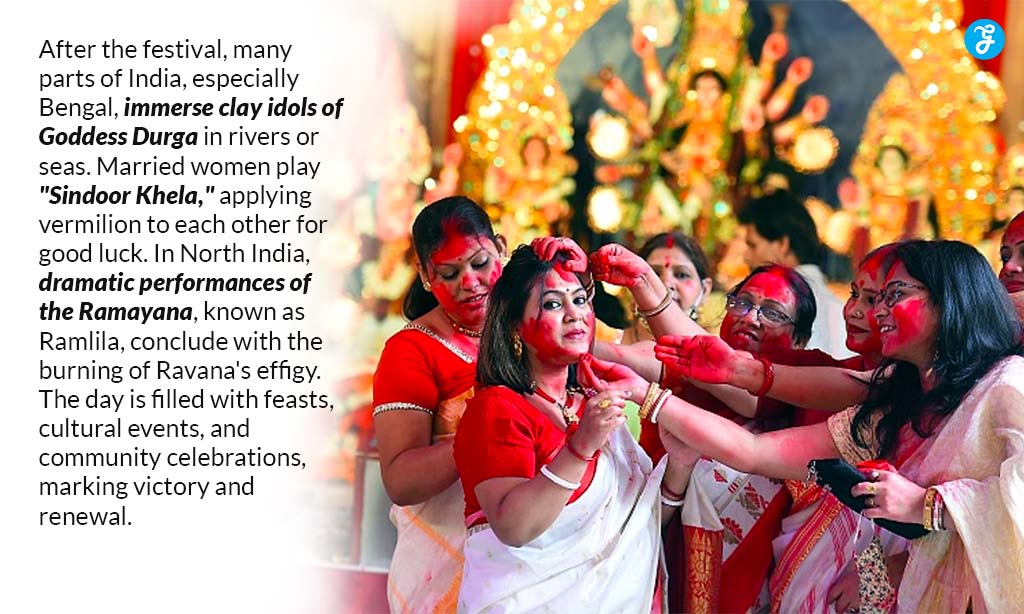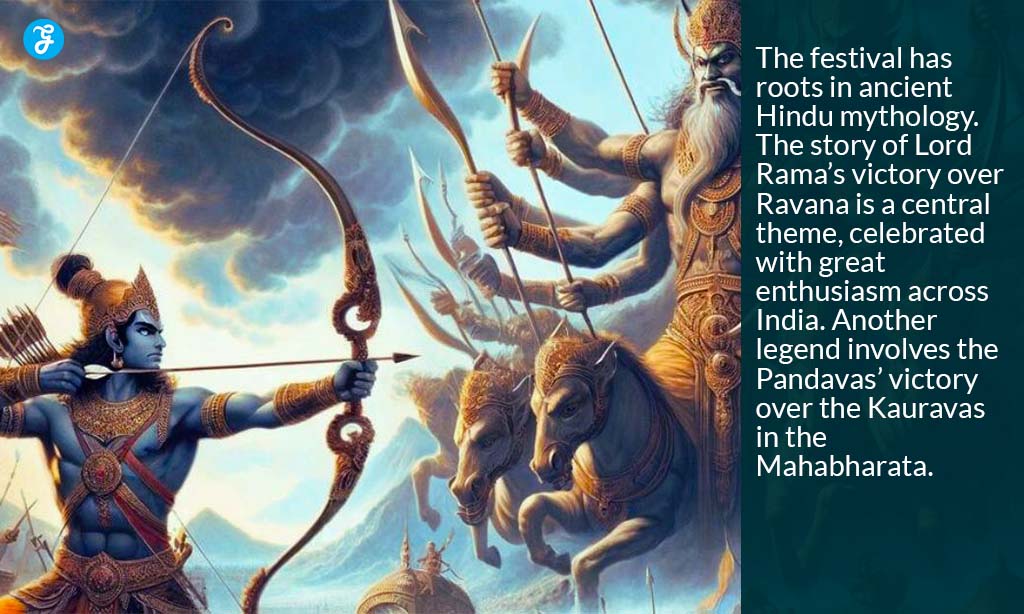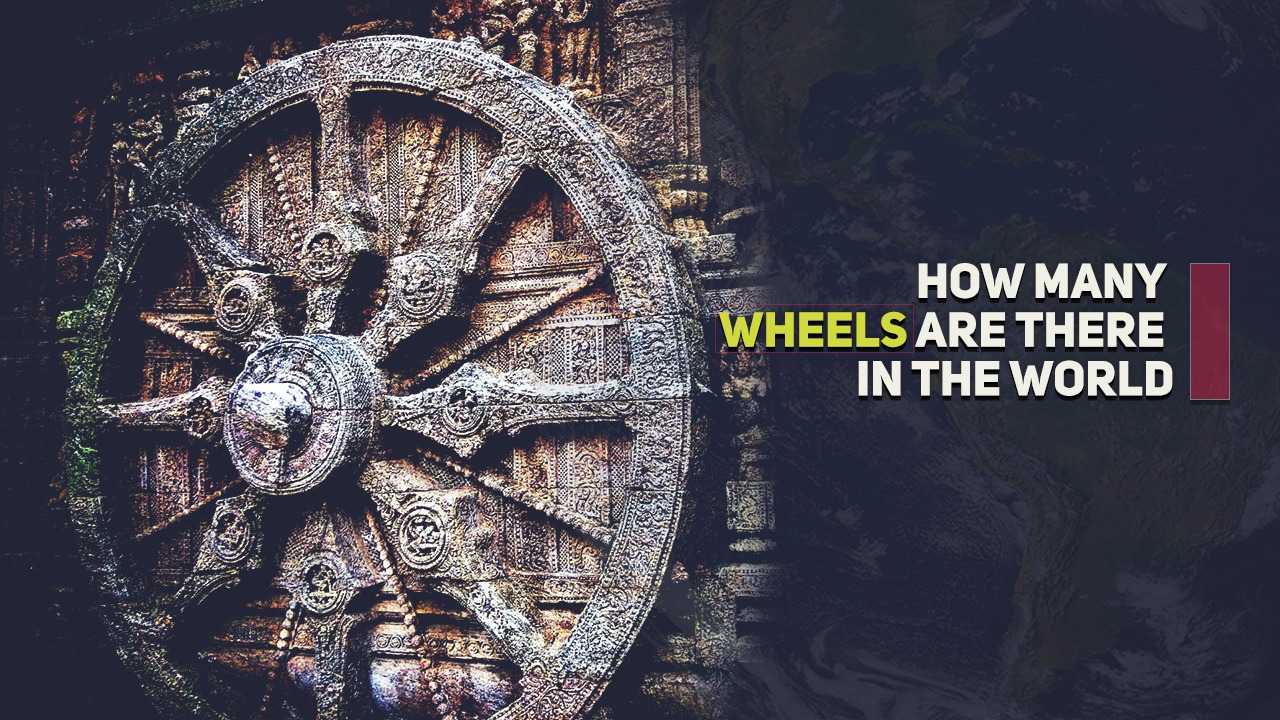Bijoya Dashami, also known as Vijayadashami, marks the culmination of the vibrant and spiritually significant Durga Puja festival. This auspicious day holds immense importance in Hindu culture, symbolizing the triumph of good over evil and the power of divine feminine energy.
As we delve into the rich tapestry of Bijoya Dashami, we’ll explore its historical roots, profound significance, and the colorful rituals that make it a cherished celebration across India and beyond.
Historical Background of Bijoya Dashami
The origins of Durga Puja, which culminates in Bijoya Dashami, can be traced back to ancient times. The festival evolved from early harvest celebrations to a grand religious and cultural event. According to Hindu mythology, the trinity of Brahma, Vishnu, and Maheshwara created Goddess Durga to vanquish the demon Mahishasura, who had become impervious to male gods.
The celebration of Bijoya Dashami has its roots in this mythological battle. It is believed that Goddess Durga fought Mahishasura for nine days and finally vanquished him on the tenth day, which is celebrated as Bijoya Dashami. Over centuries, the festival has evolved, incorporating regional variations and cultural nuances while maintaining its core spiritual significance.
The Significance of Bijoya Dashami
Bijoya Dashami holds profound symbolic meaning in Hindu culture. At its core, it represents the victory of good over evil, embodied in Goddess Durga’s triumph over Mahishasura. This victory is not just a mythological event but a powerful metaphor for the eternal struggle between righteousness and wickedness in our lives.
The festival also symbolizes the power of Shakti, or divine feminine energy. Goddess Durga, with her ten arms each holding a different weapon, represents the multifaceted nature of feminine strength and its ability to combat various forms of evil. Culturally and socially, Bijoya Dashami serves as a time for renewal and strengthening of bonds. It’s a period when people seek blessings, forgive past grievances, and look forward to new beginnings.
Rituals and Celebrations of Bijoya Dashami
Bijoya Dashami includes a series of rituals. Some popular and familiar rituals are given below.
Sindur Khela
One of the most iconic rituals of Bijoya Dashami is Sindur Khela. In this tradition, married women apply vermilion (sindur) to the idol of Goddess Durga and then to each other. This ritual is believed to bring marital bliss and longevity. The vibrant red of the sindur creates a joyous and colorful atmosphere, symbolizing the life-giving power of the divine feminine.
Idol Immersion (Visarjan)
The immersion of Durga’s idol, known as Visarjan, is a poignant and significant ritual. Devotees carry the idol in a procession to a nearby river or water body, where it is immersed. This act symbolizes Durga’s return to her heavenly abode and her union with Lord Shiva.
In recent years, there’s been a growing awareness of the environmental impact of this practice, leading to the use of eco-friendly materials for idol-making.
Bijoya Greetings and Gatherings
Bijoya Dashami is a time for community and togetherness. People visit friends and family, exchanging greetings and sweets. The phrase “Shubho Bijoya” is commonly used to convey wishes for a prosperous year ahead. These gatherings strengthen social bonds and foster a sense of community.
Regional Variations of Bijoya Dashami
While the core essence of Bijoya Dashami remains the same, celebrations vary across regions. In West Bengal, it is characterized by heartfelt goodbyes to the goddess. In North India, it coincides with the culmination of Ramlila performances, celebrating Lord Rama’s victory over Ravana.
The Ten-Day Journey of Durga Puja
Bijoya Dashami is the final day of the ten-day Durga Puja festival. Each day of this festival holds special significance:
- Mahalaya: Invocation of Goddess Durga
- Shashthi: Welcoming the Goddess
- Saptami: Beginning of the main puja
- Ashtami: The most auspicious day for worship
- Navami: The final day of worship
- Dashami (Bijoya Dashami): Bidding farewell to the Goddess
Bijoya Dashami serves as the emotional and spiritual climax of this journey, marking the end of the goddess’s earthly sojourn and the beginning of her return to her heavenly abode.
Modern-Day Celebrations
In today’s world, the celebration of Bijoya Dashami has adapted to changing times while retaining its spiritual core. Urban celebrations often feature grand pandals (temporary structures) and elaborate cultural programs, while rural areas may maintain more traditional observances.Technology and social media have transformed how people experience the festival.
Live-streaming of pujas, virtual darshans, and online greetings have become common, especially in light of recent global events. This digital shift has also made the festival more accessible to non-Hindus, fostering cultural exchange and understanding.
Cultural Impact of Bijoya Dashami
Bijoya Dashami and the Durga Puja festival have a profound impact on art, literature, and music. They inspire countless works of art, from traditional paintings to modern installations. The festival also plays a significant role in the economy, boosting sectors like tourism, crafts, and local businesses.
It is noteworthy how these celebrations facilitate cultural exchange. Durga Puja pandals often become showcases of artistic talent, drawing visitors from various backgrounds and fostering a spirit of inclusivity.
Challenges and Controversies
While Bijoya Dashami remains a beloved tradition, it faces modern challenges. Environmental concerns related to idol immersion have led to increased awareness and efforts to use eco-friendly materials. The commercialization of the festival has also been a point of debate, with some arguing it dilutes the spiritual essence of the celebration.
Balancing tradition with modernity remains an ongoing challenge. Many communities are finding innovative ways to preserve the core values of the festival while adapting to contemporary needs and sensibilities.
Global Celebrations of Bijoya Dashami
Bijoya Dashami has transcended geographical boundaries, with vibrant celebrations in countries with significant Indian diaspora populations. In places like the United States, United Kingdom, and Australia, the festival serves as a way for expatriate communities to connect with their cultural roots.
These global celebrations often adapt to local contexts, incorporating elements of the host culture while maintaining the essence of the tradition. This cultural fusion not only preserves heritage but also promotes cross-cultural understanding.
Takeaways
Bijoya Dashami stands as a testament to the enduring power of tradition and spirituality in the modern world. It encapsulates the victory of good over evil, the strength of feminine energy, and the importance of community and renewal.
As we bid farewell to Goddess Durga each year, we are reminded of the cyclical nature of life and the eternal hope for a better tomorrow.
Whether celebrated in the bustling streets of Kolkata or in a small community center halfway across the world, Bijoya Dashami continues to touch hearts and unite people. It remains a vibrant thread in the rich tapestry of Hindu culture, weaving together myth, ritual, and contemporary life in a celebration that resonates across generations and borders.


